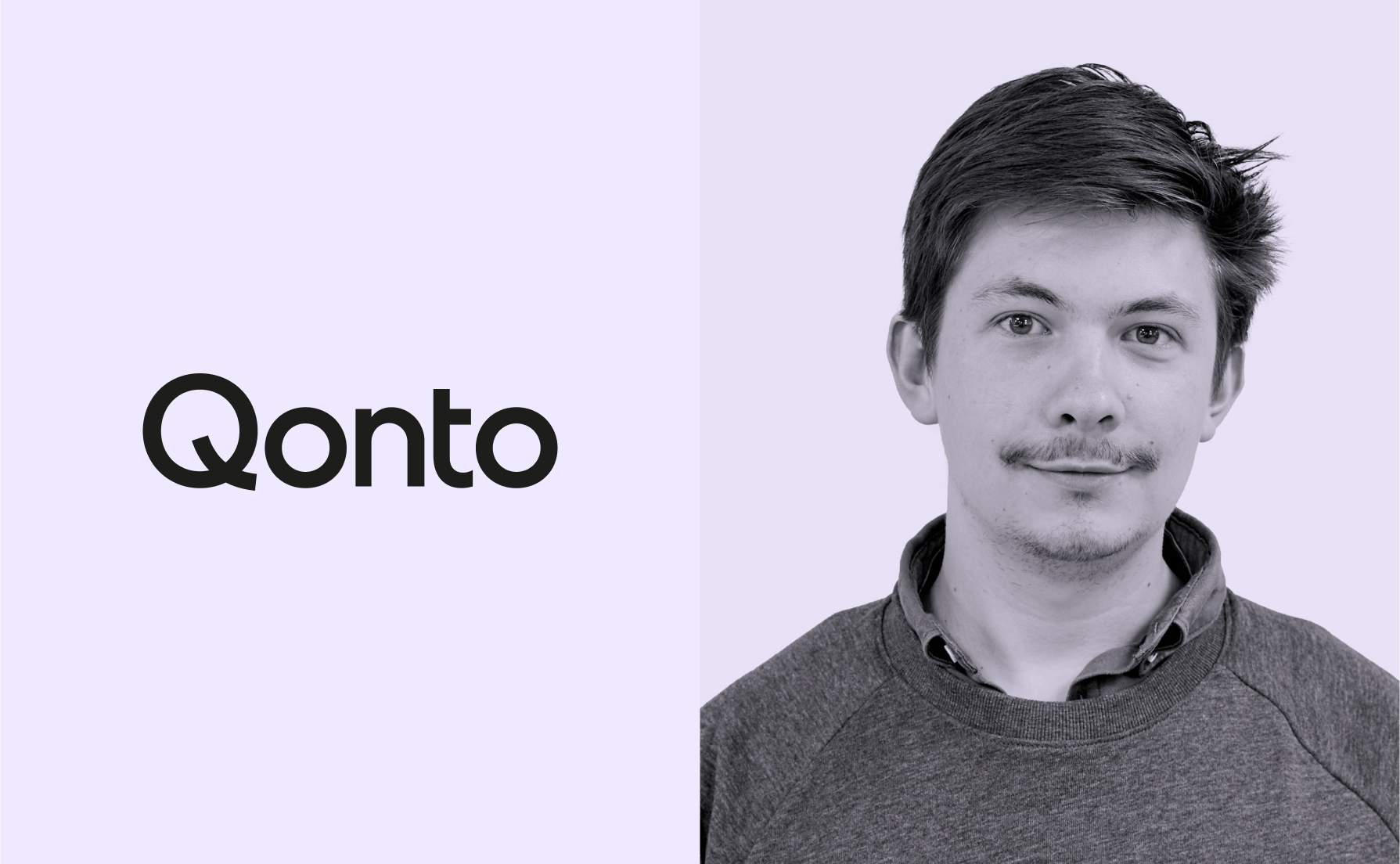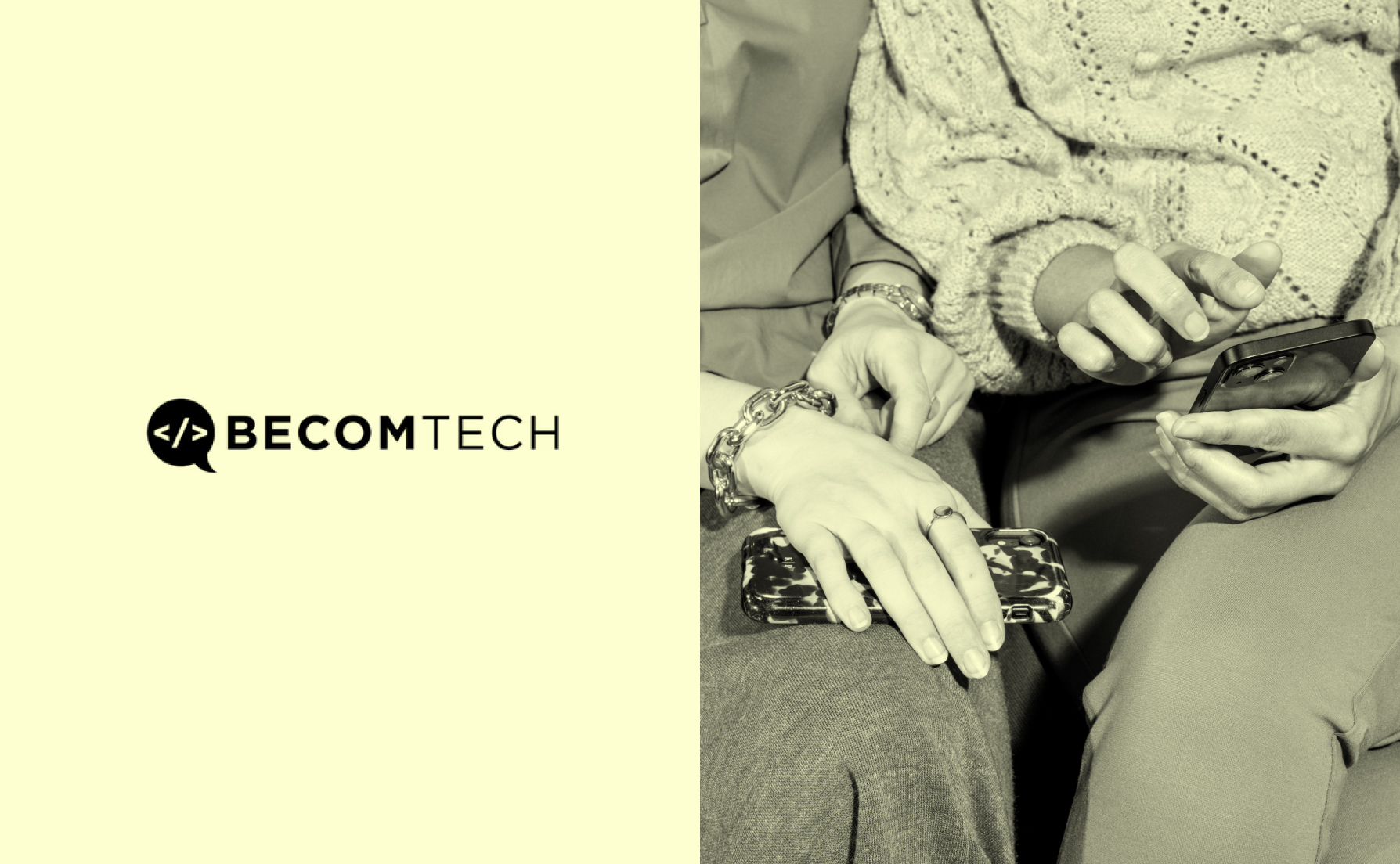French artist Lucas Beaufort has collaborated with Qonto on four exclusive virtual card designs, bringing his distinctive design language to Qonto's digital payment solutions.
Lucas Beaufort x Qonto: from canvas to cards

Ask Lucas Beaufort what he does for a living, and he won't simply say "artist." The 44-year-old from Cannes, France considers himself a Swiss army knife - a serial multi-hyphenate and connector who's dabbled in fields ranging from painting and documentary filmmaking to print publishing and event planning. Peers have described him as a culture catalyst and bridge-builder.
"I love the idea of just knowing more people," he explains from his Normandy studio, surrounded by skateboard decks, friends’ artwork, and childhood memorabilia. "The more I paint, the more I want to connect."
This philosophy has fueled Beaufort’s impressive two-decade career, with his work appearing not only on canvas, but also on magazine covers, sneakers, luxury hotel walls, and even a Ford Mustang Mach-E. His oeuvre is punctuated by his collaborations with global brands including Vans, Nike, Adidas, The North Face, W Hotel Group, Virgin Atlantic, and skateboard legends Almost and Zero. "To be a ‘yes’ person is a good thing,” he says about collaborations, but his decision to work with brands always comes down to the human factor: “It’s not just about the product, but understanding that it’s a team of people that build a brand, and put trust in you.”
I love the idea of just knowing more people. The more I paint, the more I want to connect.
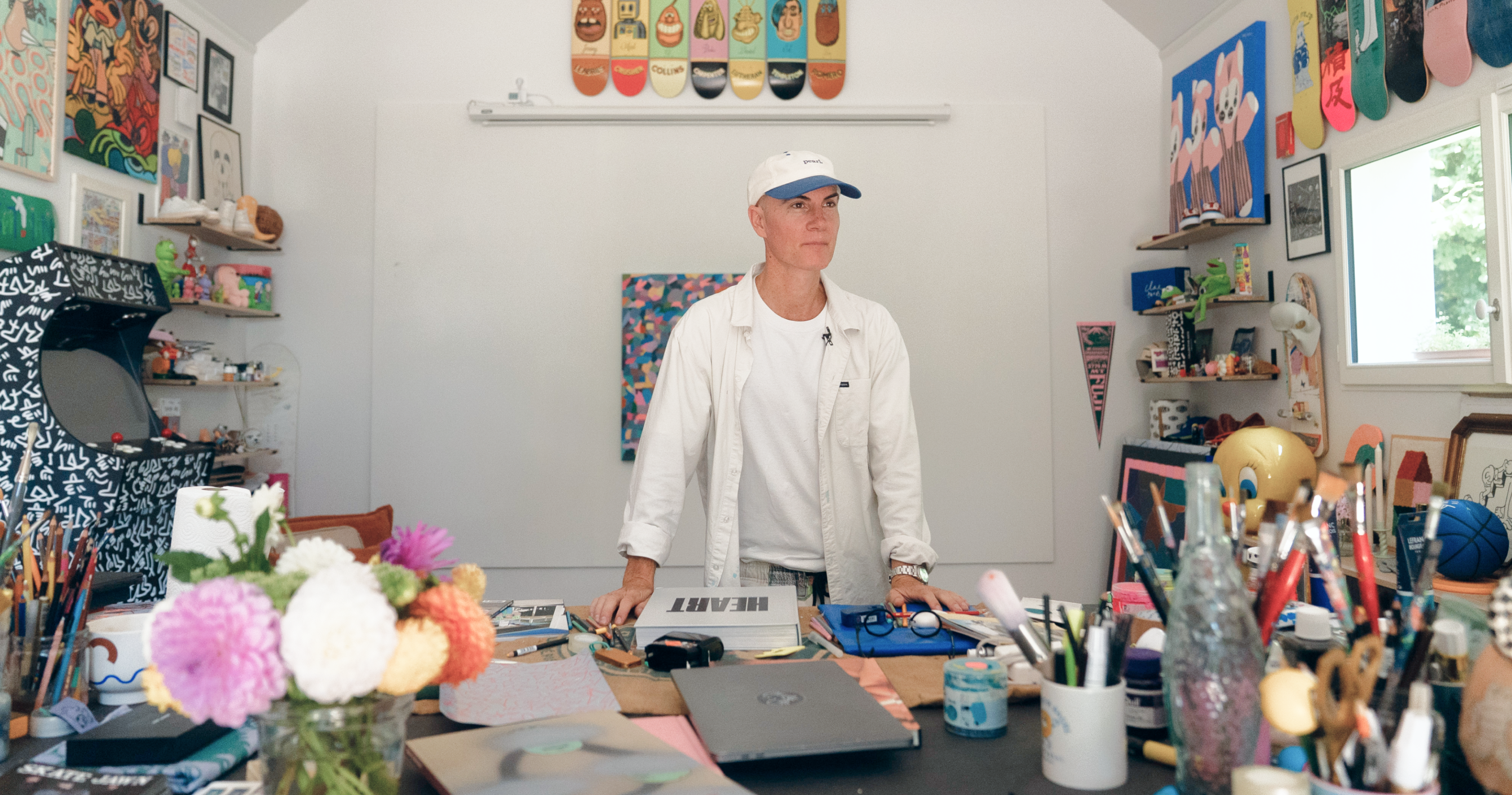
Though he didn't turn professional until 27, Beaufort's artistic foundation was built during his teenage years, heavily influenced by Japanese anime, video games, and skateboard culture. "I'm very nostalgic about the past, that teenage period where everything happens: your first kiss, your first beer," he reflects. This adolescent affection and youthful playfulness permeates his art, showing up in his visual vocabulary of simple yet expressive graphics rendered in joyful colors that translate seamlessly from gallery walls to concrete streets.
Meet Gus Gus: the underdog hero
I have probably over a thousand photos of people with Gus Gus tattoos on their body. How crazy - I don't even have one!
At the center of Beaufort's artistic universe lives Gus Gus, a half-bird, half-human character named after the helpful mouse in Disney's 1950 Cinderella. "I've always preferred the underdog, the one who isn't the hero," he explains. Beaufort’s character first emerged from his childhood nightmares: "I thought monsters were all around me, trying to frighten me. But Gus Gus saved my life. I stopped having crazy nightmares once Gus Gus appeared."
As Beaufort’s signature emblem, Gus Gus embodies the artist’s core values. The character appears without eyes - "if you don't see, you don't judge" - and often holds a flower, which Beaufort calls "the most powerful tool that exists. It costs nothing as a gift, to give love to people." Remarkably, Gus Gus has earned his own legion of fans: "I have probably over a thousand photos of people with Gus Gus tattoos on their body. How crazy - I don't even have one!"
Connecting communities
Mirroring Qonto’s mission to empower small businesses and entrepreneurs, Beaufort is similarly dedicated to celebrating local communities and helping them thrive.
His commitment to grassroots skate culture (and the small businesses and entrepreneurs that fuel it) runs deep. During the COVID lockdown, he channeled his stay-at-home energy into Heart, a 428-page tribute to skateboard shops worldwide. This magnum opus, featuring 50 stores across 30 countries with the help of countless collaborators, exemplifies his ability to build communities around shared passions. "We talk about the history of the skate shop, and how important it is to go to the brick-and-mortar store to pick out your board but also talk about the culture," he says. After COVID, Beaufort organized a global tour of the shops showcased in the book in order to meet those local communities in person.
Despite his deep affinity to print skateboard magazines (whose covers served as canvases for his earliest artworks), Beaufort has seamlessly embraced digital culture and online communities. He actively engages his 90,000-strong Instagram following with travel updates, project news, and behind-the-scenes content, harnessing social media as another tool for wider connection rather than a replacement for tangible experiences.
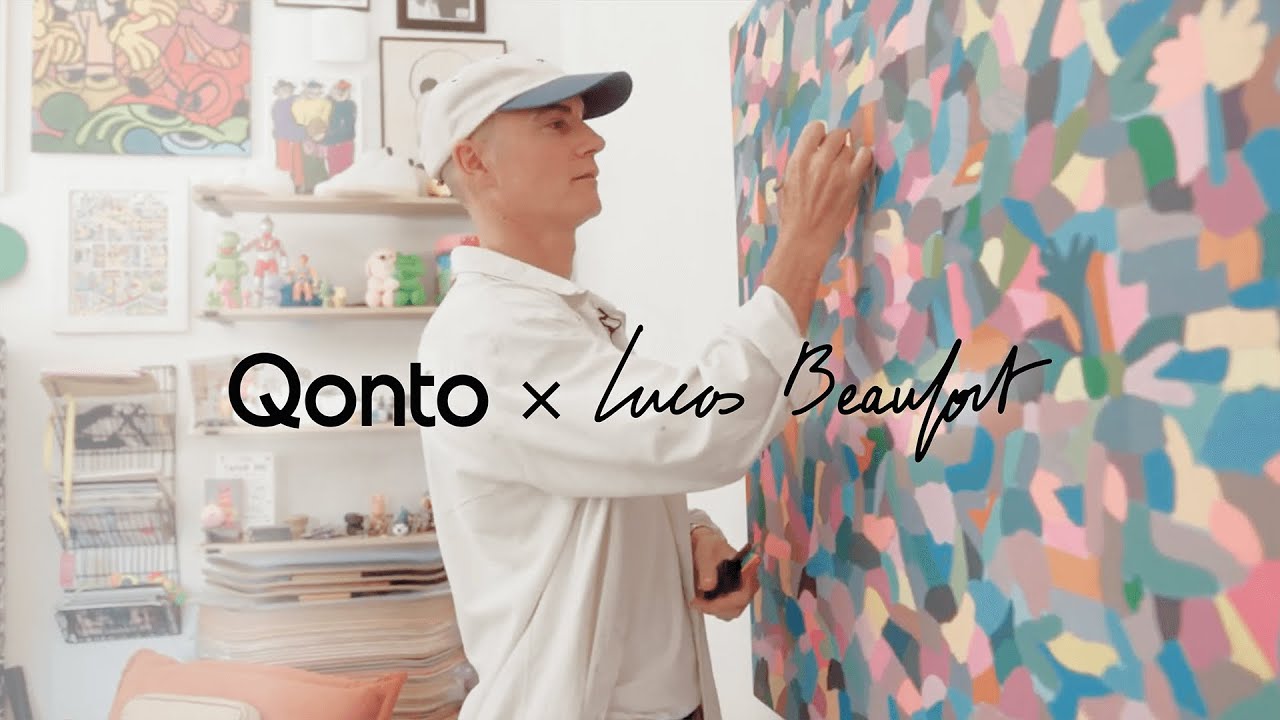
To view this video, please accept our marketing cookies in your cookie preferences. This helps us provide you with personalized content while respecting your privacy choices.
Adding design to your digital wallet
The Qonto collaboration represents firsts for both parties: the fintech's inaugural artist partnership and Beaufort's debut in the financial sector. "It's my first time designing cards, and actually working within the finance industry," he admits. "I love new things, so why not?"
Beaufort worked with Qonto’s Brand Design team to transform four of his signature artworks into exclusive eye-popping virtual cards, which utilize a playful, three-dimensional effect when viewed on a phone screen.
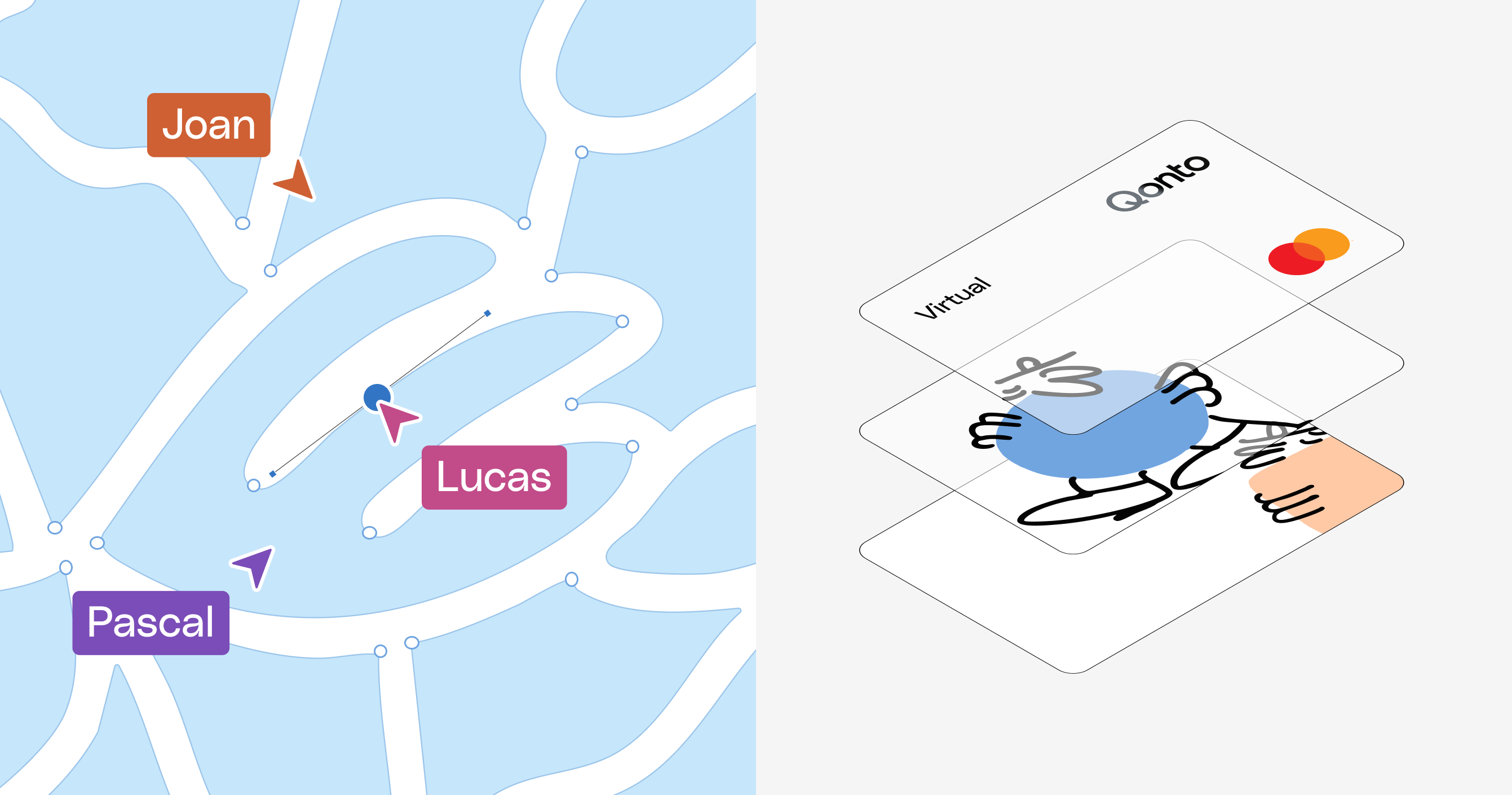
Each of Beaufort’s designs carries deep personal meaning:
- "Together or Nothing" celebrates diversity and difference: "It’s about being open-minded, connecting with people, and embracing that we're all different."
- "Gus Gus" showcases the elements of his signature character: "You see his beak, his party hat, and of course a flower."
- "Forever Bound" features interconnected figures: "I love the idea of connection, and believe we should never take this for granted. When you connect with someone, keep that forever."
- "The Puzzle" uses colorblocks to represent life's complexity: "I see life as one big puzzle - not 1,000 pieces, but billions. We assemble our puzzles our entire lives, and get pieces from other people."
Customization meets functionality
Qonto customers can now choose from these four artistic designs plus an additional four color options, bringing personality and differentiation to their virtual cards while maintaining all the practical benefits: instant creation, enhanced online security, real-time alerts for easy expense tracking, and customizable spending limits.
"I'm pretty stoked about it," Beaufort says of the final result. "It looks very good!"
More importantly, these cards transform routine business purchases into everyday celebrations of creativity and human connection. In a world that’s becoming increasingly transactional and dehumanized, who doesn’t want more of that?
Practical tips for self-employed success
If you wait [for work to come to you], you're going to wait for a long time!
For aspiring full-time artists and freelance creatives, Beaufort's work routine offers hard-won insights into building a sustainable business - a balance between creative expression and entrepreneurial discipline. His daily reality might surprise idealists: 50% creating art, 50% business operations on his computer. "People think that as an artist, you just wake up and paint all day," he says. "But no, there's a lot of organization, checking emails - two or three emails can change your life."
Start with survival math
"Take a piece of paper and write down how much money you need to live." Calculate your non-negotiables: rent, food, materials, insurance, taxes. This becomes your minimum viable income, not your goal. "Once you hit that number, keep chasing. Don't think, ‘I'll make ten thousand and then chill for three months.’"
Create your own work
Beaufort operates on a 75% self-initiated project rule, meaning most of his work comes from ideas he pitches to brands he admires, not briefs he receives. "If you wait [for work to come to you], you're going to wait for a long time!"
Embrace the business reality
Accept that creative success requires business skills:
• Track your time and true hourly rate
• Learn basic contract negotiation
• Maintain multiple revenue streams
• Master productive multitasking: “I paint and call my friends at the same time”
• Treat relationships as investments: “If I have the capacity to live the life I live, it’s because I have connections all over the world”
As Beaufort puts it: "You have to be f—ing dedicated." The creative life isn't just about talent - it's about treating your art like the business it deserves to become.

